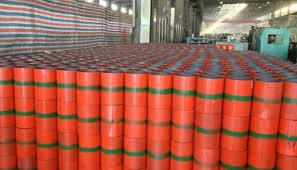- Afrikaans
- Albanian
- Amharic
- Arabic
- Armenian
- Azerbaijani
- Basque
- Belarusian
- Bengali
- Bosnian
- Bulgarian
- Catalan
- Cebuano
- Corsican
- Croatian
- Czech
- Danish
- Dutch
- English
- Esperanto
- Estonian
- Finnish
- French
- Frisian
- Galician
- Georgian
- German
- Greek
- Gujarati
- Haitian Creole
- hausa
- hawaiian
- Hebrew
- Hindi
- Miao
- Hungarian
- Icelandic
- igbo
- Indonesian
- irish
- Italian
- Japanese
- Javanese
- Kannada
- kazakh
- Khmer
- Rwandese
- Korean
- Kurdish
- Kyrgyz
- Lao
- Latin
- Latvian
- Lithuanian
- Luxembourgish
- Macedonian
- Malgashi
- Malay
- Malayalam
- Maltese
- Maori
- Marathi
- Mongolian
- Myanmar
- Nepali
- Norwegian
- Norwegian
- Occitan
- Pashto
- Persian
- Polish
- Portuguese
- Punjabi
- Romanian
- Russian
- Samoan
- Scottish Gaelic
- Serbian
- Sesotho
- Shona
- Sindhi
- Sinhala
- Slovak
- Slovenian
- Somali
- Spanish
- Sundanese
- Swahili
- Swedish
- Tagalog
- Tajik
- Tamil
- Tatar
- Telugu
- Thai
- Turkish
- Turkmen
- Ukrainian
- Urdu
- Uighur
- Uzbek
- Vietnamese
- Welsh
- Bantu
- Yiddish
- Yoruba
- Zulu
Enhanced Performance with Pump Seating Nipple Design for Efficient Fluid Transfer Systems
Understanding Pump Seating Nipples A Critical Component in Oil and Gas Operations
In the oil and gas industry, efficient extraction and production processes are paramount. One critical component in this machinery is the pump seating nipple. This integral element plays a significant role in the functionality of pumping systems, particularly in downhole applications where maximizing efficiency and ensuring safe operations are essential.
What is a Pump Seating Nipple?
A pump seating nipple is a specialized equipment piece used in the installation and operation of downhole pumps. It serves as a connection point between the pump and the tubing, ensuring that the pump is securely anchored within the wellbore. Typically made from high-strength materials like carbon steel or stainless steel, these nipples are engineered to withstand extreme pressures and temperatures, making them suitable for various oil and gas environments.
The Role of Pump Seating Nipples
The primary function of a pump seating nipple is to provide a secure seating area for the pump, preventing any movement or dislodgment during operation. This stability is crucial, especially in environments where vibrations and pressures can fluctuate significantly. Additionally, the nipple allows for the easy retrieval or replacement of pumps during maintenance operations, which can be essential for maintaining production rates and minimizing downtime.
Moreover, pump seating nipples contribute to the overall efficiency of the pumping system. By ensuring a tight seal, these nipples help to prevent leaks, which can lead to a loss of valuable resources and increased operational costs. A well-designed seating nipple will facilitate the optimal flow of fluids, thereby enhancing the pump's performance and extending its lifespan.
Design and Types of Pump Seating Nipples
Pump seating nipples come in various designs and configurations, tailored to meet specific operational requirements. The design of a seating nipple may include features like locking mechanisms, which secure the pump in place, and flared edges to enhance sealing capabilities.
pump seating nipple

Common types of pump seating nipples include
1. Straight Nipples These are standard designs providing a simple connection and support for the pump. 2. Retrievable Nipples Equipped with mechanisms that allow for easy retrieval of the pump without requiring extensive pulling or intervention. 3. Production Nipples These incorporate additional features for enhanced fluid flow, designed for specific production conditions.
The choice of which type to use often depends on the specific operational environment, including factors like well depth, fluid composition, and required production rates.
Importance of Proper Installation
Proper installation of pump seating nipples is crucial for ensuring the effectiveness of the entire system. Inadequate installation can lead to a host of issues, including loss of pressure, leaks, and even well failures. It is essential for technicians to follow manufacturer specifications and guidelines rigorously during installation to prevent operational disruptions.
Regular inspections also play a vital role in the maintenance of pump seating nipples. Over time, factors such as corrosion, wear and tear, and changes in well conditions can affect the integrity of the nipple, necessitating timely interventions. By conducting routine maintenance and monitoring, operators can ensure long-term reliability and performance from their pumping systems.
Conclusion
In summary, pump seating nipples are a critical yet often overlooked component of pumping systems within the oil and gas industry. Their role in establishing stable connections and facilitating efficient flow is vital for successful operations. By understanding their design, function, and importance, industry professionals can make informed decisions about their use and maintenance, ultimately leading to improved production efficiency and reduced operational risks. As the industry continues to evolve, the importance of innovative solutions like pump seating nipples will only grow, reinforcing the need for ongoing advancements in design and technology.
-
Tubing Pup Joints: Essential Components for Oil and Gas OperationsNewsJul.10,2025
-
Pup Joints: Essential Components for Reliable Drilling OperationsNewsJul.10,2025
-
Pipe Couplings: Connecting Your World EfficientlyNewsJul.10,2025
-
Mastering Oilfield Operations with Quality Tubing and CasingNewsJul.10,2025
-
High-Quality Casing Couplings for Every NeedNewsJul.10,2025
-
Boost Your Drilling Efficiency with Premium Crossover Tools & Seating NipplesNewsJul.10,2025







